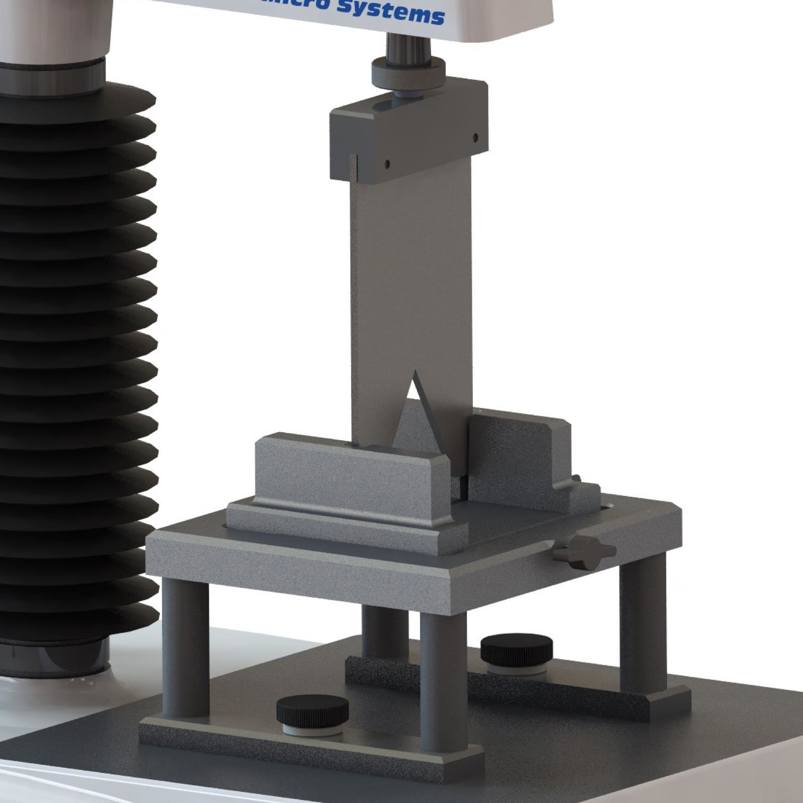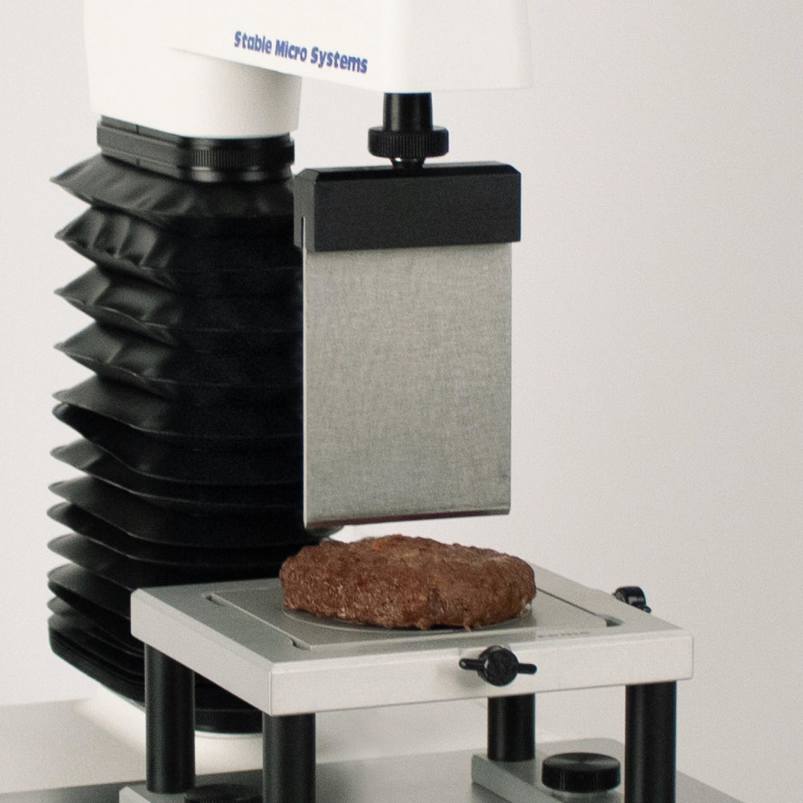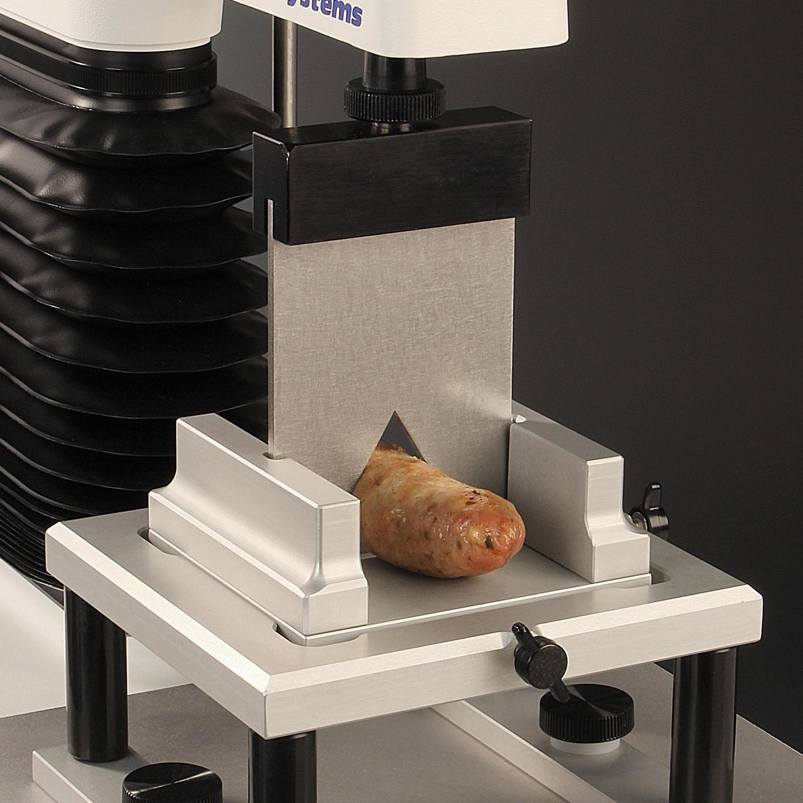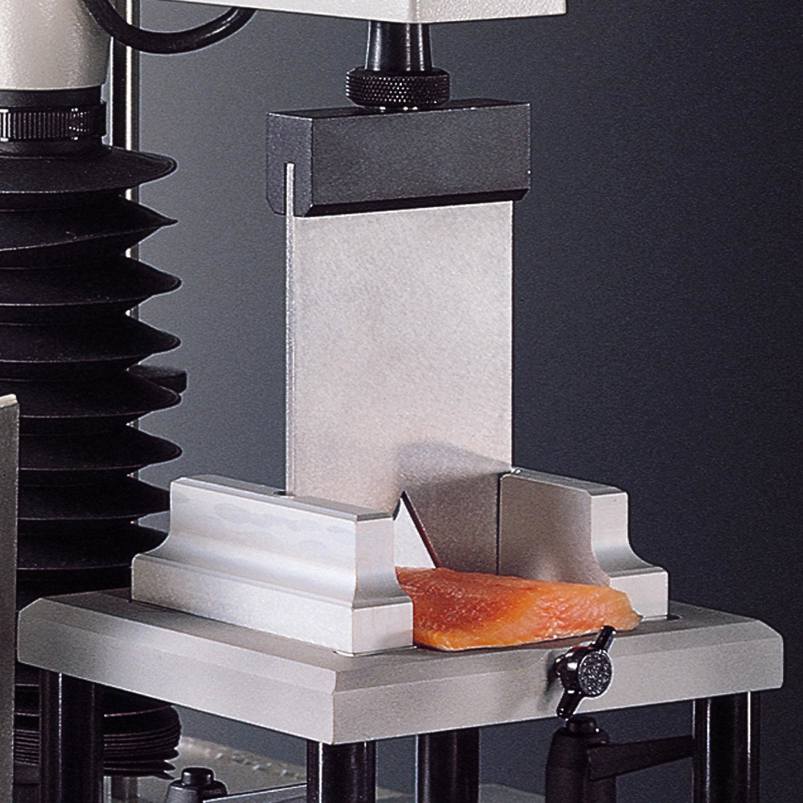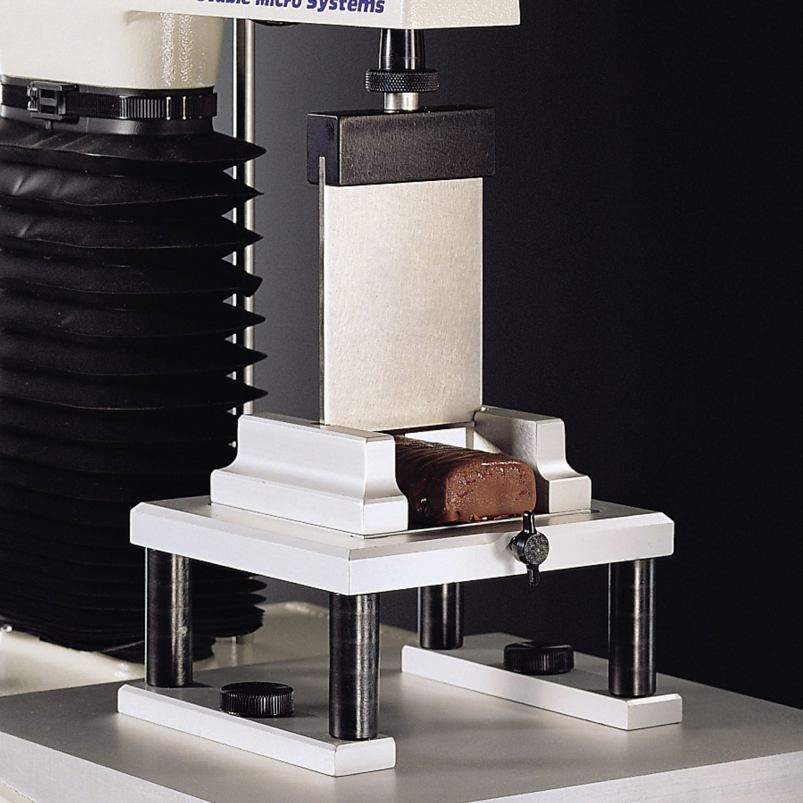Product overview
Consider the front teeth in a line – their action can be imitated by the use of a blade on the Texture Analyser. The ‘Bite force’ property can be assessed with a Standard Knife blade. This is the most common choice for a cutting test and consists of a Warner Bratzler Blade, a reversible blade, a slotted blade insert and a blade holder. The reversible blade has a knife edge at one end and a flat guillotine edge at the other. In operation, the blade is firmly held by means of the blade holder which screws directly into the Texture Analyser. The slotted blade insert is located directly into the Heavy Duty Platform and acts as a guide for the blade whilst providing support for the product.
A sample of fixed height and width (or wider than the blade) is placed on the testing platform and the maximum force and area under the positive region of the curve obtained as measures of hardness or ‘bite characteristics’.
The Warner Bratzler Blade was originally used on meat products; however, Blade Set applications now include sausages, cheese, fruit, vegetables and any product which requires testing by cutting or shearing.
How does the Blade Set work?
Typical graph
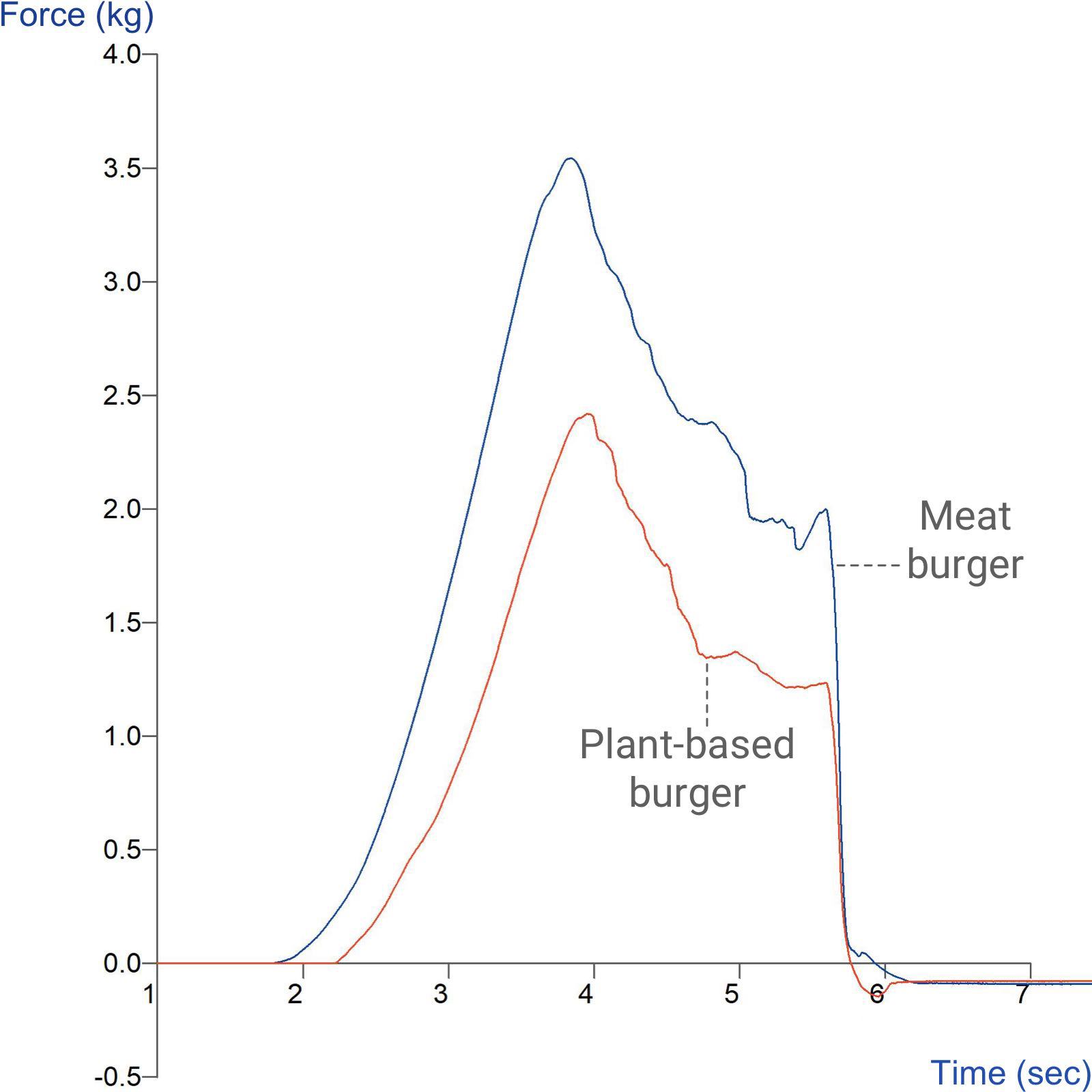
Ideal sample form
This attachment can be used to partially cut through a sample which is solid and self-supporting or contained within a vessel (i.e. ice cream) or can cut all of the way through a product using the blade guide if required. If you consider that if the upper set of teeth were straightened they would effectively form a knife edge – using any form of blade can therefore represent the force to cut or 'bite' into a sample. A Warner-Bratzler Blade is more suited to circular samples.
Benefits and limitations
- 3 blade types provided
- Shearing can occur completely through the sample due to the slot
- Whilst universal in its application, the blade is not sharp and may therefore ‘compress’ rather than shear brittle/fragile samples or soft products before the cutting action takes place and therefore a craft knife might be more favourable for these products.
Optional extras
Short Blade Set for TA.XTExpressC Texture Analysers – HDP/BS-SB
Technical information
Installation
Full installation instructions are provided within the Education Zone of the latest Exponent/Connect software version and on the technical information sheet accompanying this product.
Chemical compatibility
Stable Micro Systems probes and attachments are commonly made from four materials: anodised aluminium (AA6082 T6), stainless steel (316 T), Delrin (acetyl copolymer) and Perspex (polycarbonate).
In general use, probes and attachments made from these materials will be suitable for testing food products and inert non-food materials.
The four materials listed above are not universally resistant to all types of chemicals and as such the compatibility of the probe/attachment material with the product (to be tested) must be established to prevent damage to the probes and attachments. If the compatibility of the product with the probe is unknown to the customer then the chemical information about the product (Material Safety Data Sheet or Product Data Sheet) should be submitted to Stable Micro Systems. Stable Micro Systems will then assess the suitability of the probe/attachment material for use with the product and advise accordingly. If this advice is not sought then Stable Micro Systems will not accept liability for probes/attachments damaged by chemical attack from the product being tested.
Cleaning and maintenance
All probes and attachments may be cleaned in warm (or hand hot) water using a mild detergent. A soft brush may be used but abrasive cleaning aids should be avoided. Stable Micro Systems products should not be microwaved or cleaned in a dishwasher.
Screw threads should be lightly lubricated after drying using a light lubricant, e.g. petroleum jelly, mineral oil. This will aid the fitting and unscrewing of the item. Each component of a probe or attachment should be wrapped separately when stored, to avoid scratching or chipping. This will safeguard against any unnecessary damage to the accessory.
Troubleshooting
Misalignment of the blade and blade guide will cause friction. A ‘Blank’ test is advised using a Button Trigger to check for this.

